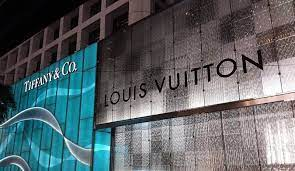Introduction
Luxury fashion and retail have seen their share of mergers and acquisitions recently make headlines and stir debate, drawing widespread scrutiny and controversy. We take great interest in exploring both its ramifications as well as any benefits or risks of such an endeavor, taking into consideration all elements that might either make such a venture attractive or risky business decisions.
1. Unlock Strategic Synergies by Leveraging Complementary Strengths
Louis Vuitton and Tiffany's both boast distinct brand identities and product offerings, yet an alliance could create an incredible synergy that capitalizes on each company's strengths. Under LVMH Moet Hennessy Louis Vuitton's umbrella, pairing Louis Vuitton's global reach, expertise in fashion design and strong global footprint with Tiffany's rich legacy, jewelry expertise, and loyal customer base could open up remarkable growth potential and market dominance opportunities for both companies.
Louis Vuitton is best known for their luxurious handbags and accessories as well as ready-to-wear collections but could help Tiffany's expand its market presence by opening up access to Louis Vuitton's vast customer base and featuring Tiffany's exquisite jewelry designs for display there. Additionally, their longstanding commitment to quality and craftsmanship would add prestige and prestige to Louis Vuitton products offerings.
Establish New Markets and Diversify
One key advantage of the Louis Vuitton and Tiffany's merger would be expansion into new markets. Louis Vuitton could help Tiffany's expand internationally through their store network in China and India; tapping into more affluent customers while driving revenue growth via this expansion strategy could become possible through this merger strategy.
Louis Vuitton could gain from Tiffany's jewelry expertise, expand their product offering, and reach more consumers, improving competitiveness within the luxury market. Furthermore, this merger would pave the way for unique Louis Vuitton collections that take advantage of Tiffany's unparalleled craftsmanship and heritage.
Implement Digital Transformation
Fashion and luxury industries have seen an exponential surge in online platforms offering product sales. Louis Vuitton and Tiffany's use digital strategies to transform themselves, allowing both brands to leverage each other's combined resources to accelerate digital transformation initiatives more quickly. A merger could allow both brands to maximize this advantage for mutual growth.
Louis Vuitton's robust online presence and digital marketing initiatives could bolster Tiffany's sales and customer engagement online, offering consumers engaging shopping experiences tailored specifically for luxury goods markets. Sharing technological advancements and platforms could ensure they deliver an optimal shopping experience tailored to meet consumer preferences in luxury goods markets.Louis Vuitton and Tiffany's present an attractive opportunity for growth and market dominance by merging, with complementary strengths combining to expand into new markets while taking advantage of digital transformation, offering significant returns to both brands. However, any merger must consider potential risks and challenges related to it such as cultural integration issues as well as maintaining their identities in terms of brand management and cultural integration issues.
At its core, whether a merger or acquisition is intelligent depends on the successful implementation of integration strategies and tapping potential synergies while keeping each brand's features alive. Time will reveal its true results; however, industry watchers eagerly anticipate seeing whether these luxury giants form long-lasting partnerships that flourish over time.




Comments
Post a Comment